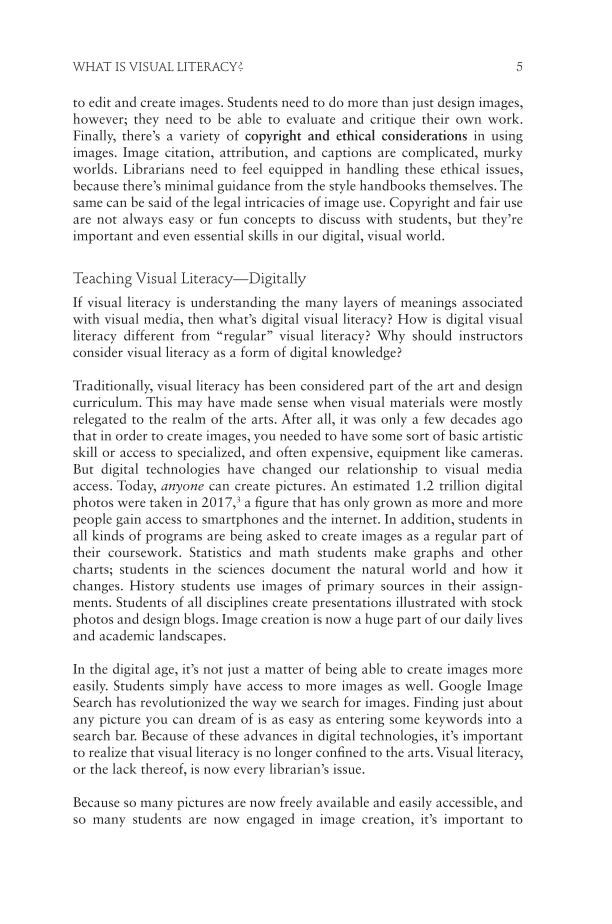What Is Visual Literacy? 5 to edit and create images. Students need to do more than just design images, however they need to be able to evaluate and critique their own work. Finally, there’s a variety of copyright and ethical considerations in using images. Image citation, attribution, and captions are complicated, murky worlds. Librarians need to feel equipped in handling these ethical issues, because there’s minimal guidance from the style handbooks themselves. The same can be said of the legal intricacies of image use. Copyright and fair use are not always easy or fun concepts to discuss with students, but they’re important and even essential skills in our digital, visual world. Teaching Visual Literacy—Digitally If visual literacy is understanding the many layers of meanings associated with visual media, then what’s digital visual literacy? How is digital visual literacy different from “regular” visual literacy? Why should instructors consider visual literacy as a form of digital knowledge? Traditionally, visual literacy has been considered part of the art and design curriculum. This may have made sense when visual materials were mostly relegated to the realm of the arts. After all, it was only a few decades ago that in order to create images, you needed to have some sort of basic artistic skill or access to specialized, and often expensive, equipment like cameras. But digital technologies have changed our relationship to visual media access. Today, anyone can create pictures. An estimated 1.2 trillion digital photos were taken in 2017,3 a figure that has only grown as more and more people gain access to smartphones and the internet. In addition, students in all kinds of programs are being asked to create images as a regular part of their coursework. Statistics and math students make graphs and other charts students in the sciences document the natural world and how it changes. History students use images of primary sources in their assign- ments. Students of all disciplines create presentations illustrated with stock photos and design blogs. Image creation is now a huge part of our daily lives and academic landscapes. In the digital age, it’s not just a matter of being able to create images more easily. Students simply have access to more images as well. Google Image Search has revolutionized the way we search for images. Finding just about any picture you can dream of is as easy as entering some keywords into a search bar. Because of these advances in digital technologies, it’s important to realize that visual literacy is no longer confined to the arts. Visual literacy, or the lack thereof, is now every librarian’s issue. Because so many pictures are now freely available and easily accessible, and so many students are now engaged in image creation, it’s important to
Document Details My Account Print multiple pages
Print
You have printed 0 times in the last 24 hours.
Your print count will reset on at .
You may print 0 more time(s) before then.
You may print a maximum of 0 pages at a time.









































































































